The SilverStone Strider Gold S 1500W PSU Review
by E. Fylladitakis on April 7, 2015 8:00 AM EST- Posted in
- Cases/Cooling/PSUs
- PSUs
- SilverStone
- 1500W
External Appearance
SilverStone was not kidding when they said that this is the world's smallest 1500W power supply. The 180mm chassis is certainly not adhering to standard ATX specifications, yet it is significantly shorter than any 1500W power supply we have seen to date. With its modular design and a short cable kit available, SilverStone mentions that someone could even install this in some HTPC and small form factor cases, and even recommends some of their HTPC cases for use with the ST1500-GS. We cannot possibly fathom why anyone would want to power any such system with this behemoth, but the possibility is there.
The chassis is sprayed with a grainy black paint that is smudge and scratch resistant. SilverStone attempted to engrave the whole company logo across the top of the chassis, somewhat unsuccessfully, as it is barely visible to the naked eye in a well-lit environment.
A metallic badge with the company logo can also be seen at the center of the fan finger guard. The sticker with the electrical specifications of the PSU is on the left side of the chassis, visible from a windowed side panel if the PSU is installed with its fan facing downwards.
The only interesting thing at the rear of the PSU is the lack of a simple on/off switch. Apparently, certain sacrifices need to be made when trying to fit that much power in a 180mm long chassis. The numerous connectors for the modular cables can be seen at the front of the chassis, with a sticker indicating which connector corresponds to each cable. SilverStone also placed small plastic caps on the connectors, which is definitely more of an aesthetic than a practical enhancement.
The CPU and PCI Express cables do not share the same connectors, which differ in color. These are also keyed, meaning that you cannot insert either cable into the wrong connector, even if they both have the same number of pins. The 24-pin ATX cable has a little connector beneath it for the voltage sensing connector, which is oddly recessed almost half a centimeter inside the body of the unit. The smaller connectors are for SATA/Molex cables.
Internal Design
A standard black 135mm fan from Young Lin Tech is what lies beneath this unit's circular finger guard. The model of the fan is DFB132512H, which means a dual ball bearing system and a maximum speed of 2500RPM. Such a speed is insanely high for a 135mm fan, which would be pushing over 120CFM if it were to reach it. As with any modern PSU, the ST1500-GS features thermal control circuitry adjusts the speed of the fan according to the load and the temperature of the unit; we can only hope that it will not get anywhere near its maximum speed.
For the creation of the ST1500-GS, SilverStone enlisted a not very well known but respectable OEM - Enhance. The layout is extremely well designed, especially considering the vast number of components that the designer had to fit in such a small chassis. Many PSU layouts are a mess with half as many parts. The designer certainly did not hold back either; even though this is a 1.5kW top-tier PSU, everything about it is an overkill. The filtering stage comprises of four Y capacitors, four X capacitors and two filtering inductors. There are two NTC thermistors to limit the inrush current, which would be immense considering the size of the capacitors, with a relay for each. The relays will isolate the thermistors after their job is done, minimizing energy losses. The primary conversion bridges share their own small heatsink right after the filtering stage.
Despite its appearance, the huge heatsink along the side of the PSU only holds the Active PFC chips, three transistors and a diode. The passive components of the PFC circuit are a large filtering inductor and not one, not two, but four Matsushita (Panasonic) 270μF/420V capacitors. Without the NTC thermistors, the inrush current of this PSU would probably be high enough to de-solder or even melt wires. A simple, plain heatsink that looks like nothing more than a metallic plate holds all four transistors of the primary inversion stage, which form a full-bridge configuration.
The secondary conversion stage transistors are at the bottom of the main PCB, on a thermal pad. SilverStone is cleverly using the body of the unit itself as a heatsink for the secondary side, which will normally get (very) warm if the PSU is loaded. This however will also have a side effect that we cannot quantitatively assess within the frame of this review - it will increase the internal temperature of the system that will be powered by this PSU.
The quality of the Strider Gold S is a very complicated matter. As we mentioned above, the PFC stage electrolytic capacitors are supplied by Panasonic. Most of the secondary stage electrolytics are supplied by Nippon Chemi-Con and Rubycon, both of which are very reputable companies. There, unexpectedly, a TAICON electrolytic capacitor appears. TAICON is a good manufacturer as well but the company does not share the reputation of either Nippon Chemi-Con or Rubycon. Still, the role of that capacitor is not highly important, nor it is installed in an area that is expected to get overly hot. The polymer capacitors are supplied by Teapo, which SilverStone selected because these are almost impossible to fail regardless of the manufacturer.
It also may be exceptionally well designed, but on balance the assembly quality is mediocre. The soldering job is messy, with copper wires dipped in solder serving as power rails (see above) and numerous joints that look as if they have been manually performed by a complete amateur, which comes across as a little worrying.


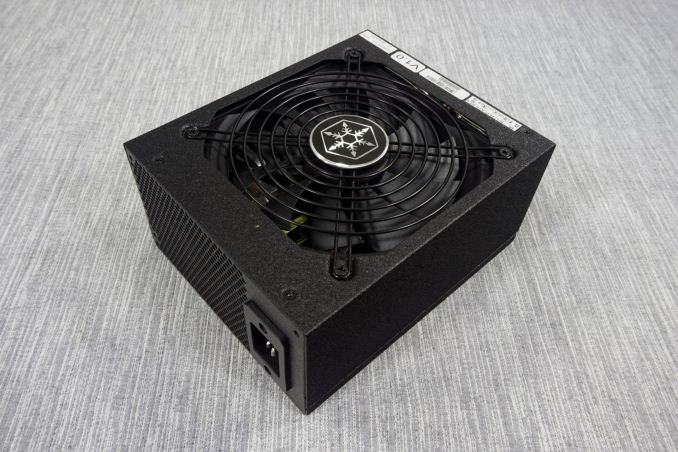
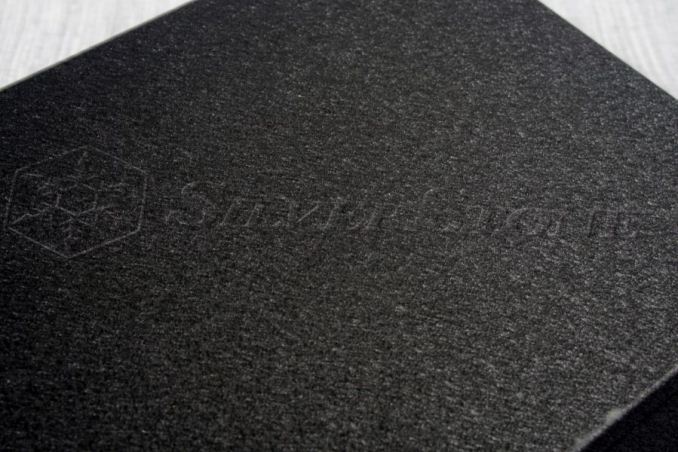
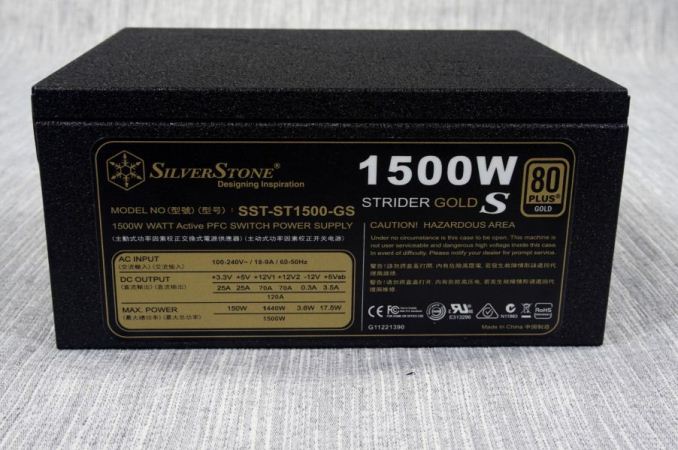






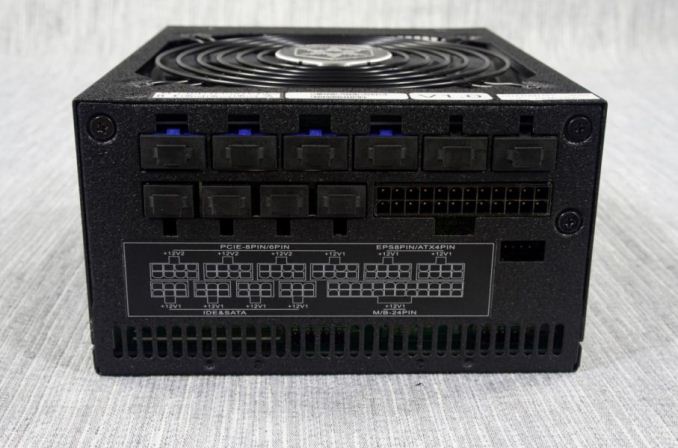
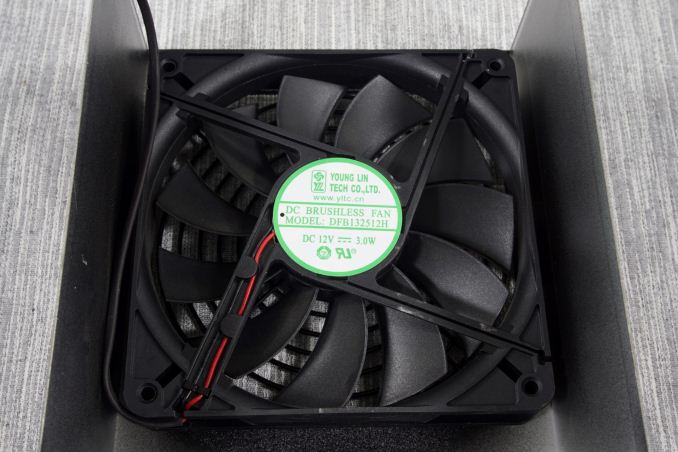

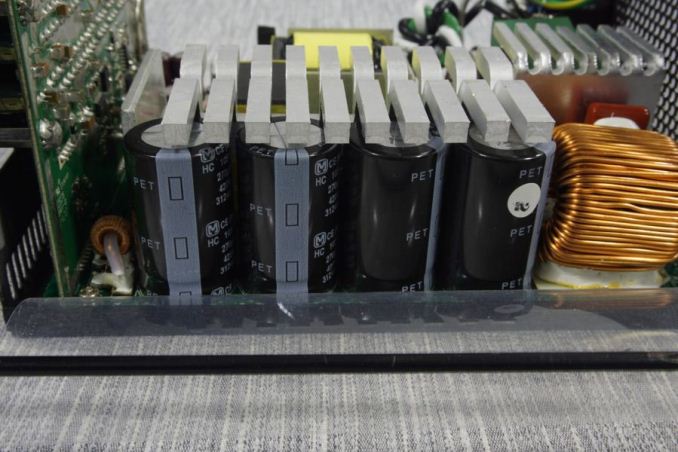






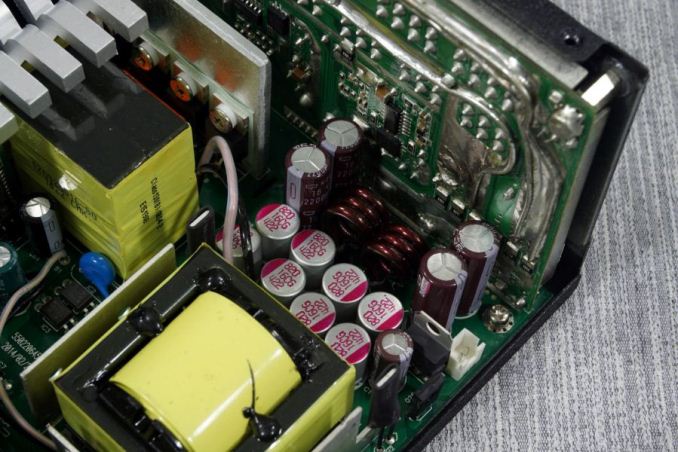








32 Comments
View All Comments
ShieTar - Thursday, April 9, 2015 - link
The Powercolor Devil13 (2x R9 290X) can pull loads in excess of 450W (and clear excess of the ATX specifications), so a crossfire setup with two of those and an AMD FX-9590 can exceed 1100W on CPU & GPU alone. Add Memory and a bunch of Harddrives, and maybe a dozen electronic gadgets on the USB ports, and you can use the 1500kW in extreme load cases.Not saying you should, an Intel 2011-3 system with two Titan X will give you more gaming power in barely over 600W peak power consumption.
Oxford Guy - Thursday, April 9, 2015 - link
One overclocked 290X hit 400 watts in Tom's testing. It was only a very brief spike, but those spikes should be factored in. So, three of those plus a 9590 and you're talking 1465 watts.jabber - Tuesday, April 7, 2015 - link
Handy review for the three or four that might need this.sweeper765 - Tuesday, April 7, 2015 - link
I would appreciate a different direction from the psu makers.With today's low power systems idling at 15-30W it would make more sense to focus on low load efficiency and smaller total power output, while maintaining the same quality components found in higher powered models.
darkfalz - Tuesday, April 7, 2015 - link
That describes most PSUs actually sold. The one in this review is strictly for e-peen who devote far too much of their income to their PCs.Samus - Tuesday, April 7, 2015 - link
People always overbuild their PSU's. They go for watts over quality. It's a consumer misunderstanding of power requirements and efficiency.Most OEM systems come with ~200-watt PSU's these days. Even high-end workstations like HP Z and Dell Precisions have 280-watt PSU's.
My Xeon workstation with a GTX970 has a 400-watt PSU and my Overclocked i7 SLI gaming PC has a 550-watt PSU, and both have headroom (peak draw from the wall for each under OCCT\furmark is 363-watts and 509-watts.)
I'm not saying a product like this has no reason to exist, but let's just say it's for "the 1%."
DanNeely - Wednesday, April 8, 2015 - link
The most recent 80+ spec, Titantium does focus on low load efficiency by requiring 90% efficiency at a 10% load. For all but the most severe cases of mis-matched system power and PSU size this will bring idle loads for systems with dGPUs into the high efficiency operating range.If OEMs actually refresh their low power models the same should be possible for IGP only boxes; but the negligible number of 80+ units of any size in that range make me suspect we'll be waiting a while for that to happen. Accommodating Haswell's deeper sleep states might push more of them to refresh their designs over the next year or two; but only 9/23 haswell compatable <400W models on newegg are gold certified (none are platinum). However the additional 432 non-haswell certified PSUs in that power bracket make it clear that this is going to be a very slow process. TBH for those systems actual amounts of power saved are small enough that it's only at very high power prices that a high efficiency PSU will pay for itself over a reasonable time horizon. Unless forced by regulators, I wouldn't hold my breath for any significant movement in the small PSU segment.
darkfalz - Tuesday, April 7, 2015 - link
Fools and their money hey... there are some people who purchase merely for the wattage number on the PSU. Says nothing of the quality and even less of the actual requirement. I wonder if this was a hangover from the days where a cheap 300W POS, er PSU would struggle to output 200W without exploding. I peaked 350 watts with a pretty hefty system (GTX 680, overclocked i5-3570K, 2 HDDs). That's 250 watts of headroom from my "low end" 600W PSU. Things might be different in AMD world but Intel/NVIDIA just keep getting more and more PPW.reininop - Tuesday, April 7, 2015 - link
I didn't read the full article, so I may be restating, but for all the people asking what you need 1500W for, the efficiency of these usually peaks at about 50 - 70% of rated power if I remember right. While even a 750 W pull is a pretty hefty system, there might be a slight market for the eco-conscious tech enthusiast...Okay, so maybe the audience is still only about 4 people.
DanNeely - Tuesday, April 7, 2015 - link
You obviously didn't read much if any of the article: You're way off.This is an 80+ gold unit which means that it needs to be >88% efficiency from 20-100% of full load (@220v, >87% at 110). It managed >90, and peaked at 92% efficient at a 50% load.
Sub 70% efficient power supplies are designs from a decade or more ago; and are long gone from the market (possibly excepting some of the sketchiest no-name models); bargain basement 80+ units are widely available now.
Lastly, the power rating is output power, not input. A hypothetical 50% efficient 1500W PSU would still output 1500W of power; it would however draw 3000W at the intake.